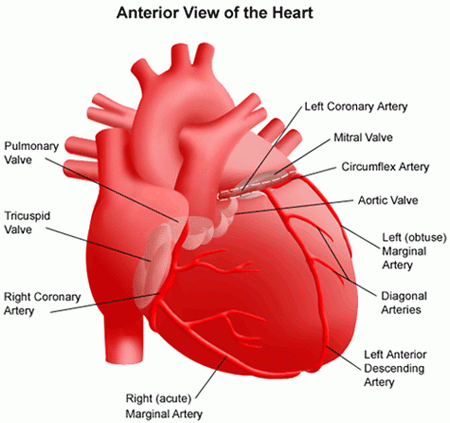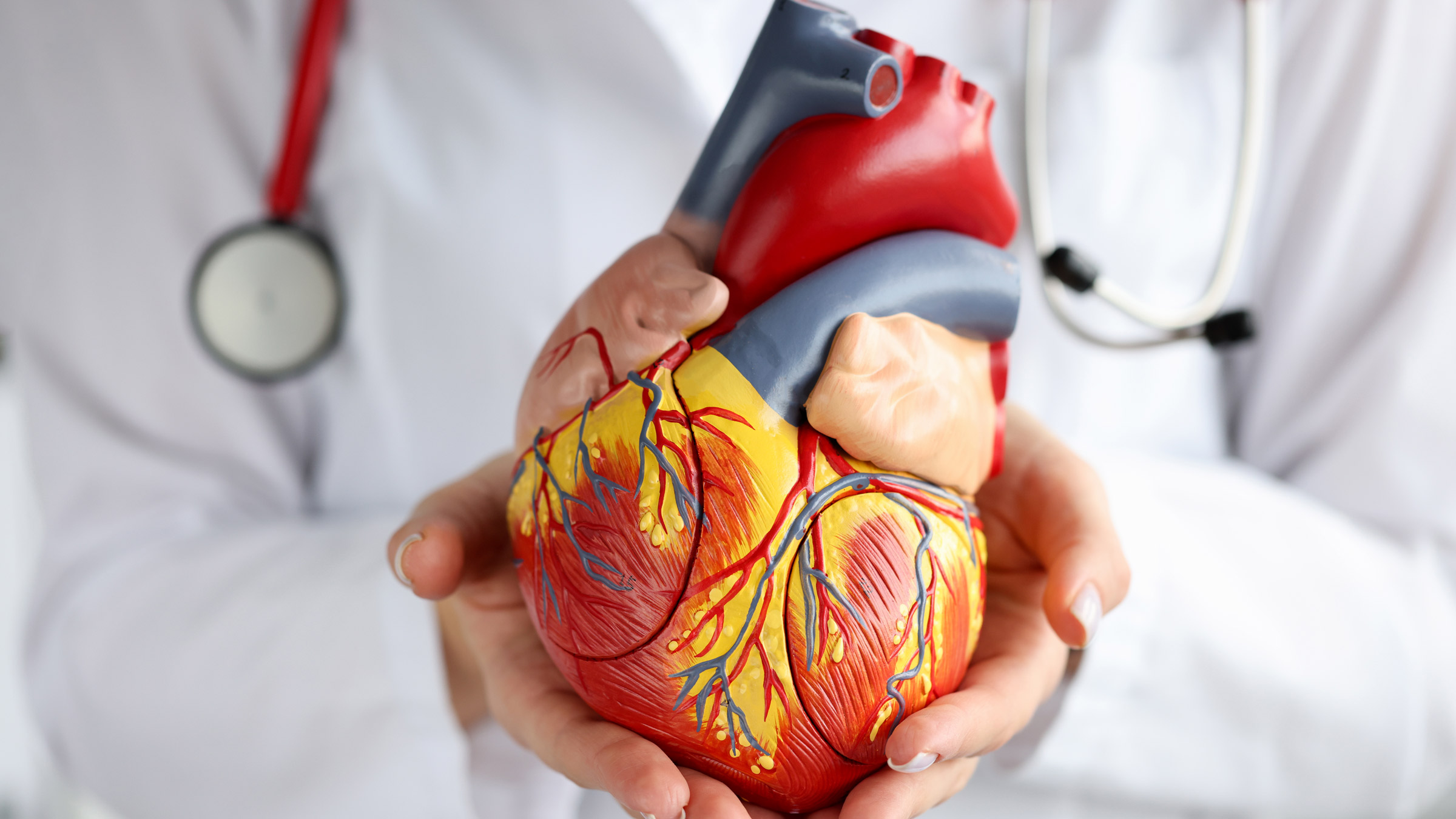Recognizing the Relevance of Cardiology in Modern Medical Care Solutions
Cardiology plays a crucial duty in contemporary healthcare, particularly as cardiovascular disease continues to be the leading root cause of mortality worldwide. Advancements in diagnostics and treatment have actually transformed individual treatment, enabling earlier interventions and boosted outcomes. In addition, the shift towards preventive cardiology empowers individuals to manage their wellness proactively. As innovation remains to advance, the assimilation of innovative services may even more redefine cardiology's effect on public health and wellness, motivating a better evaluation of emerging fads and their implications.
The Prevalence of Heart Condition and Its Effect On Public Wellness
Heart disease continues to be the leading reason of fatality internationally, its effect extends much past specific people to impact public wellness systems and economic situations. The high prevalence of cardiovascular disease positions a substantial stress on healthcare sources, requiring raised funding for therapy, recovery, and prevention programs. Public wellness campaigns must address danger elements such as obesity, smoking cigarettes, and less active way of livings, which add considerably to the climbing incidence of heart conditions.Moreover, the financial concern associated with cardiovascular disease is tremendous, including not just straight medical prices however likewise indirect expenditures connected to lost efficiency and premature mortality. Communities encounter obstacles in taking care of these prices, commonly causing variations in medical care access and outcomes. As the population ages and lifestyle-related dangers proceed to escalate, the seriousness for effective cardiology interventions ends up being critical. Attending to heart disease is not just a matter of individual health and wellness but also an important public wellness priority.
Advancements in Cardiac Diagnostics and Imaging Techniques
Recent innovations in cardiac diagnostics and imaging techniques have actually changed the area of cardiology, improving the capacity to keep track of and discover heart diseases. Methods such as cardiac MRI, CT angiography, and echocardiography have actually become progressively innovative, offering comprehensive pictures of cardiac structures and functions. These techniques permit the very early recognition of problems like coronary artery disease, cardiac arrest, and valvular disorders.Moreover, improvements in non-invasive diagnostics, such as wearable innovation and remote tracking devices, have empowered patients and healthcare providers. These tools promote real-time monitoring of heart rhythms and various other important signs, leading to prompt interventions. Additionally, synthetic intelligence is being incorporated into imaging evaluation, boosting accuracy and efficiency in medical diagnosis.
Innovations in Treatment Alternatives for Heart Conditions
Recent advancements in cardiology have actually caused substantial technologies in treatment choices for heart disease. These consist of advanced surgical strategies that enhance step-by-step results and emerging medicines that provide new opportunities for therapy. As the field develops, these advancements play a crucial duty in boosting individual treatment and outcomes.
Advanced Surgical Techniques
Advancements in medical techniques have actually changed the landscape of cardiology, supplying new hope for clients with heart disease. Minimally intrusive treatments, such as catheter-based treatments, have actually significantly decreased recovery times and hospital remains. Strategies like robotic-assisted surgical treatment improve accuracy, enabling cosmetic surgeons to navigate complex anatomical structures with higher precision. Furthermore, innovations in imaging technology facilitate real-time visualization during procedures, improving end results. Transcatheter aortic shutoff replacement (TAVR) exhibits a development in dealing with aortic constriction, making it possible for valve replacement without open-heart surgery. Additionally, hybrid strategies that incorporate surgical and catheter-based techniques supply tailored options for various cardiac issues. These innovative medical strategies not just boost person safety but likewise expand therapy alternatives, highlighting the critical duty of advancement in contemporary cardiology methods.
Emerging Drugs and Treatments
As the landscape of cardiology proceeds to progress, arising medicines and therapies play a crucial function in enhancing therapy choices for heart conditions. Developments such as novel anticoagulants and progressed lipid-lowering agents have changed the management of cardio illness, significantly lowering client morbidity and mortality. In addition, the advancement of genetics therapies and regenerative medication uses promising opportunities for dealing with conditions formerly deemed incurable. Medical tests are constantly disclosing the efficacy of these treatments, pushing the borders of conventional therapies. Moreover, the combination of electronic health innovations facilitates individualized medicine, permitting customized therapy plans based on hereditary and way of living variables. Collectively, these innovations underscore the dynamic nature of cardiology, enhancing person outcomes and redefining standards of care in contemporary health care.
The Duty of Preventive Cardiology in Individual Treatment
Preventative cardiology plays an important function in individual treatment by concentrating on the recognition of threat variables that add to heart problem. With way of life adjustment methods and early detection methods, doctor can successfully minimize the occurrence of cardiovascular events - Cardiology. This aggressive approach not only improves person end results yet likewise promotes long-term health
Danger Aspect Identification
While heart diseases continue to be a leading root cause of morbidity and mortality worldwide, effective risk factor identification functions as a keystone of precautionary cardiology. Identifying risk variables such as high blood pressure, family, diabetic issues, and hyperlipidemia history is crucial for very early intervention. Healthcare specialists make use of different screening methods to review these aspects, permitting tailored safety nets. Additionally, comprehending a client's way of life selections, such as cigarette smoking and physical lack of exercise, even more educates danger assessments. This thorough examination enables medical professionals to develop individualized treatment plans targeted at mitigating dangers. By focusing on risk aspect identification, healthcare systems can improve patient results and lower the general worry of cardiovascular illness, inevitably adding to enhanced public wellness strategies and resource allocation.
Way Of Life Alteration Strategies
A wide range of researches highlights the critical function of way of life alteration approaches in reducing heart disease risk. These methods include nutritional changes, increased physical activity, cigarette smoking cessation, and weight monitoring. By taking on a heart-healthy diet rich in fruits, veggies, entire grains, and lean healthy proteins, people can decrease cholesterol degrees and high blood pressure. Regular exercise strengthens the heart and enhances total cardio wellness. In addition, giving up smoking cigarettes greatly reduces the risk of heart illness and improves healing prices for those with status quo. Weight management even more contributes to cardiovascular health by reducing other risk factors such as diabetes and high blood pressure. Applying these way of living alters not just advertises private well-being yet additionally offers as a foundation of preventive cardiology in patient treatment.
Very Early Detection Techniques
Way of living alterations considerably add to decreasing cardiovascular condition threats, however they are most effective when coupled with very early detection strategies. Precautionary cardiology emphasizes the importance of identifying possible heart problems before they rise into significant problems. Techniques such as high blood pressure surveillance, cholesterol screening, and progressed imaging innovations like echocardiograms play essential duties in examining cardiovascular health and wellness. Biomarkers and genetic testing likewise enhance the accuracy of early discovery, allowing for tailored preventative methods. Routine cardiac danger evaluations equip doctor to intervene proactively, possibly preventing heart attacks and strokes (Dr Garcia). By integrating these very early discovery techniques right into regular care, individuals can gain from timely way of living interventions and targeted treatments, eventually boosting outcomes and improving lifestyle
Integrating Modern Technology Into Cardiology Practices
As developments in innovation proceed to improve numerous fields, the combination of cutting-edge devices and systems right into cardiology practices has ended up being crucial for boosting patient care and results. Telemedicine platforms allow cardiologists to check people from another location, improving access to care while reducing the concern on health care facilities. Wearable gadgets, such as smartwatches, allow constant heart price tracking, informing both medical professionals and people to possible concerns in real-time. In addition, fabricated knowledge (AI) is being made use of to examine huge quantities of cardiac data, assisting in very early medical diagnosis and tailored therapy strategies. Advanced imaging methods, including 3D echocardiography, enhance visualization of heart frameworks, bring about a lot more exact interventions. Electronic wellness documents (EHRs) enhance client information management, making certain that cardiologists have prompt access to essential data. With each other, these technological developments are changing cardiology, advertising proactive management and boosted health and wellness outcomes for people with cardio conditions.
The Significance of Person Education and Engagement
Individual education and learning and interaction play a pivotal function in the monitoring of cardiovascular wellness. By equipping individuals with knowledge regarding their problems, treatment choices, and way of living modifications, medical care service providers encourage people to take an active function in their treatment. This proactive method can bring about improved adherence to recommended drugs, nutritional changes, and exercise regimens, eventually lowering the risk of complications.Engagement likewise promotes a solid patient-provider relationship, encouraging open communication and depend on. When people feel informed and included, they are most likely to voice problems and ask questions, which can result in much better scientific results. In addition, educational resources, such as workshops or digital platforms, can improve understanding have a peek at this site and advertise self-management methods. On the whole, focusing on patient education and engagement is important for improving cardiovascular health and wellness, boosting lifestyle, and decreasing health care expenses associated with cardiovascular diseases.
Future Trends in Cardiology and Their Potential Impact

Frequently Asked Inquiries
What Way Of Living Adjustments Can Minimize Cardiovascular Disease Risk?
The current inquiry addresses way of living modifications that can significantly reduce heart problem danger. Cardiology. Embracing a balanced diet regimen, taking part in regular exercise, preserving a healthy weight, taking care of anxiety, and preventing cigarette can significantly improve cardio health and wellness
How Can I Identify Early Indicators of Heart Issues?
Recognizing very early signs of heart troubles involves surveillance signs such as upper body pain, lack of breath, tiredness, and uneven heartbeat. Prompt awareness of these indications can prompt essential clinical examination and treatment for far better results.
What Are the Differences Between Cardiologists and Heart Surgeons?
The differences in between cardiologists and heart cosmetic surgeons exist in their roles; cardiologists largely diagnose and handle heart problems with non-invasive techniques, while heart surgeons carry out surgeries to fix architectural heart concerns. Each plays an important, distinctive duty.

How Often Should I Obtain My Heart Wellness Checked?
What Function Does Genetics Play in Cardiovascular Disease Danger?
Genetics substantially influences cardiovascular disease danger, with familial patterns showing inherited problems. Certain genes can incline individuals to high blood pressure, cholesterol issues, and various other cardiovascular troubles, highlighting the value of genetic testing in evaluating heart health and wellness. Heart disease continues to be the leading cause of fatality globally, its influence extends much beyond private people to impact public wellness systems and economic climates. Public wellness initiatives need to address danger factors such as weight problems, smoking cigarettes, and sedentary way of livings, which contribute significantly to the see it here climbing incidence of heart conditions.Moreover, the economic worry associated with heart illness is tremendous, encompassing not only straight clinical costs however additionally indirect expenditures related to lost performance and early mortality. Precautionary cardiology plays a crucial role in client treatment by concentrating on the recognition of risk elements that contribute to heart illness. Fabricated knowledge (AI) and machine knowing are improving diagnostics and person surveillance, enabling early detection of heart diseases. The differences between cardiologists and cardiac specialists exist in their functions; cardiologists largely detect and take care of heart problems via non-invasive approaches, while heart doctors execute medical treatments to deal with architectural heart concerns.
Comments on “The essential guide to understanding Cardiology and heart disease prevention”